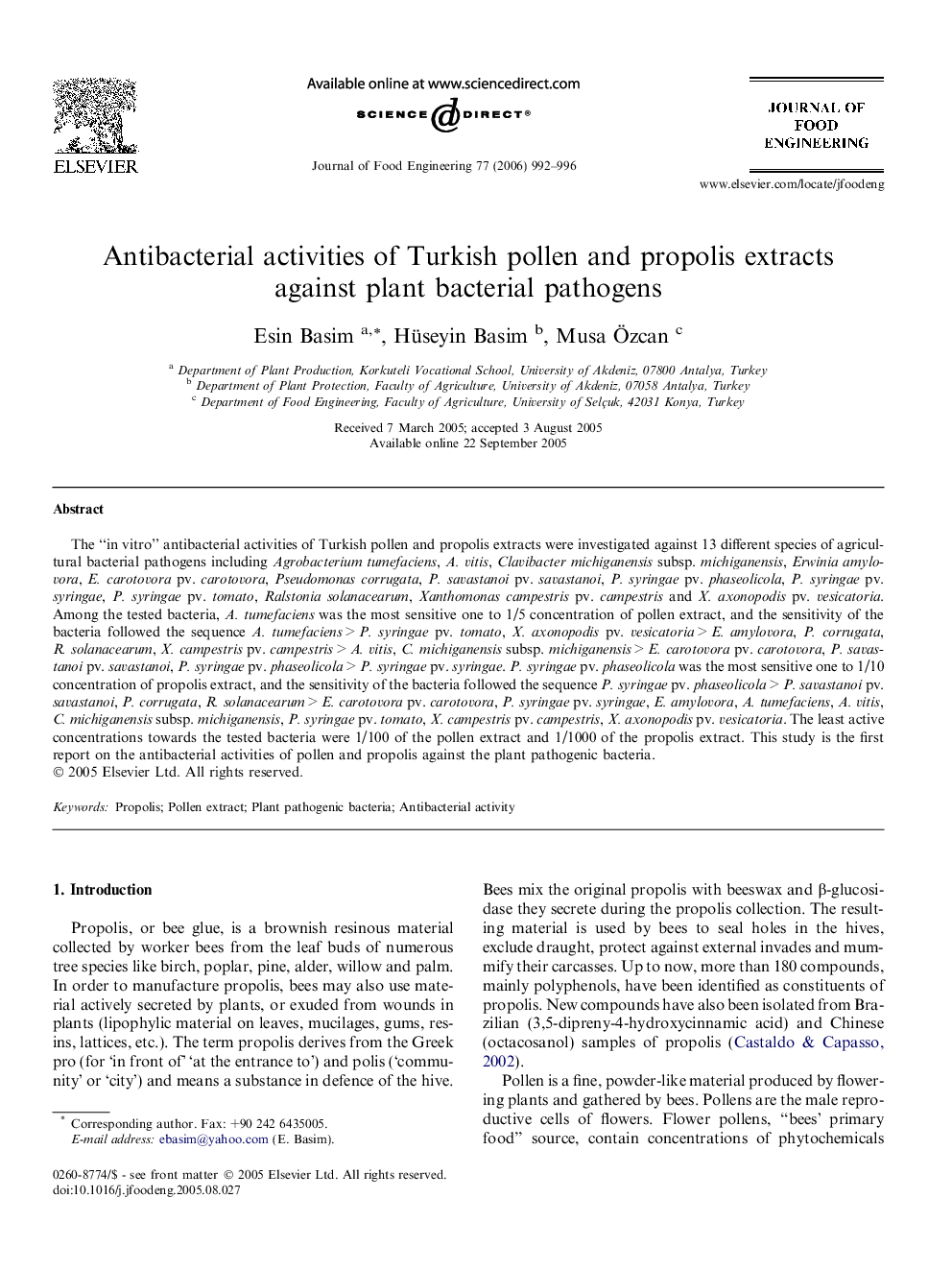| Article ID | Journal | Published Year | Pages | File Type |
|---|---|---|---|---|
| 226559 | Journal of Food Engineering | 2006 | 5 Pages |
The “in vitro” antibacterial activities of Turkish pollen and propolis extracts were investigated against 13 different species of agricultural bacterial pathogens including Agrobacterium tumefaciens, A. vitis, Clavibacter michiganensis subsp. michiganensis, Erwinia amylovora, E. carotovora pv. carotovora, Pseudomonas corrugata, P. savastanoi pv. savastanoi, P. syringae pv. phaseolicola, P. syringae pv. syringae, P. syringae pv. tomato, Ralstonia solanacearum, Xanthomonas campestris pv. campestris and X. axonopodis pv. vesicatoria. Among the tested bacteria, A. tumefaciens was the most sensitive one to 1/5 concentration of pollen extract, and the sensitivity of the bacteria followed the sequence A. tumefaciens > P. syringae pv. tomato, X. axonopodis pv. vesicatoria > E. amylovora, P. corrugata, R. solanacearum, X. campestris pv. campestris > A. vitis, C. michiganensis subsp. michiganensis > E. carotovora pv. carotovora, P. savastanoi pv. savastanoi, P. syringae pv. phaseolicola > P. syringae pv. syringae. P. syringae pv. phaseolicola was the most sensitive one to 1/10 concentration of propolis extract, and the sensitivity of the bacteria followed the sequence P. syringae pv. phaseolicola > P. savastanoi pv. savastanoi, P. corrugata, R. solanacearum > E. carotovora pv. carotovora, P. syringae pv. syringae, E. amylovora, A. tumefaciens, A. vitis, C. michiganensis subsp. michiganensis, P. syringae pv. tomato, X. campestris pv. campestris, X. axonopodis pv. vesicatoria. The least active concentrations towards the tested bacteria were 1/100 of the pollen extract and 1/1000 of the propolis extract. This study is the first report on the antibacterial activities of pollen and propolis against the plant pathogenic bacteria.
